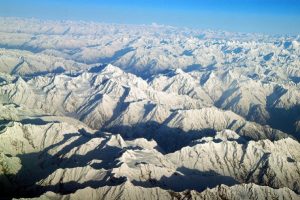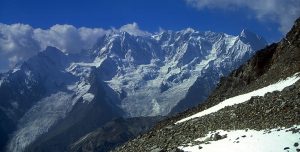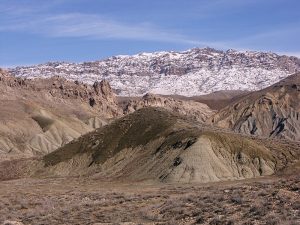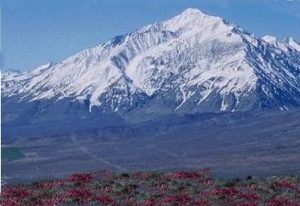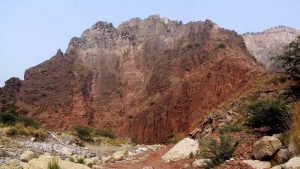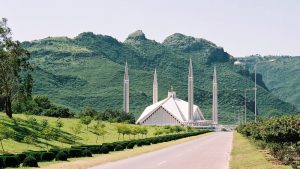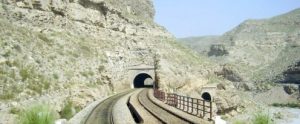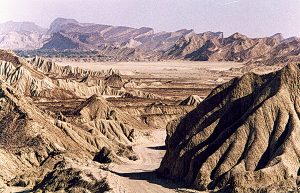Majestic Mountain Ranges in Pakistan: A Comprehensive Guide
Pakistan, a land of diverse landscapes, boasts some of the world’s most awe-inspiring mountain ranges. Home to five of the fourteen tallest mountains globally, Pakistan’s peaks beckon adventurers, mountaineers, and nature enthusiasts alike. From the mighty Himalayas to the breathtaking Karakoram, these geological wonders offer a wealth of natural beauty, cultural significance, and exhilarating trekking opportunities.
The Mighty Himalayas in Pakistan
The Himalayas, a colossal mountain system stretching across Asia, grace Pakistan with their western extension. While the majority of the Himalayas lie in India, Nepal, and China, Pakistan claims a significant portion of this majestic range.
Nanga Parbat: The Killer Mountain Nanga Parbat, the ninth-highest mountain in the world, stands tall in the Gilgit-Baltistan region. With a daunting reputation as the “Killer Mountain,” Nanga Parbat has witnessed numerous mountaineering tragedies. Despite its challenges, it remains a magnet for experienced climbers seeking to conquer its formidable slopes.
Trekking and Mountaineering in the Himalayas: The Pakistani Himalayas offer a plethora of trekking routes, ranging from gentle walks to challenging expeditions. Popular trails include the Fairy Meadows trek, the Nanga Parbat Base Camp trek, and the Rupal Face trek. For seasoned mountaineers, Nanga Parbat and other peaks present the ultimate challenge.
The Breathtaking Karakoram Range
The Karakoram, the world’s second-highest mountain range, is almost entirely situated in the Gilgit-Baltistan region of Pakistan. It’s a paradise for mountaineers and adventurers, with its towering peaks, massive glaciers, and rugged terrain.
K2: The Second Highest Peak in the World K2, also known as Mount Godwin-Austen, is the crown jewel of the Karakoram. Standing at a staggering 8,611 meters, it’s known for its extreme difficulty and treacherous conditions. Despite this, it attracts the world’s most skilled climbers who yearn to reach its summit.
Other Notable Peaks in the Karakoram Besides K2, the Karakoram boasts numerous other towering peaks, including Broad Peak, Gasherbrum I and II, and Masherbrum. These mountains offer various mountaineering challenges and stunning vistas for trekkers.
Exploring the Hindu Kush Range:
The Hindu Kush, another formidable mountain range, extends into northern Pakistan. Known for its rugged beauty and cultural diversity, the Hindu Kush offers a unique blend of adventure and cultural immersion.
Tirich Mir: The Roof of the Hindu Kush Tirich Mir, the highest peak in the Hindu Kush, stands at 7,690 meters. First climbed in 1950, it offers a challenging yet rewarding ascent for mountaineers. Its remote location and stunning scenery make it a true wilderness experience.
Hindu Raj: A Hidden Gem The Hindu Raj, a subrange of the Hindu Kush, is located in northern Pakistan. With its pristine valleys, alpine meadows, and snow-capped peaks, it’s a haven for trekkers and nature lovers seeking solitude and tranquility.
Lesser-Known Mountain Ranges of Pakistan
Pakistan is home to several other mountain ranges, each with its unique charm and geological significance. These include:
Safed Koh Range:
It is a mountain range that starts from Tora Bora of Eastern Afghanistan and ends to northwestern Pakistan.
Sulaiman Mountains Range:
Its highest peak is Takht-e-Sulaiman which is of 3,487 m. It is also known by the name of Throne of Solomon. It is located near the village of Darazinda. This range is close to Frontier Region Dera Ismail Khan’s borders. It is also the highest peak in Frontier Region Dera Ismail Khan.
Spin Ghar Mountains Range:
Its highest peak is Mount Sikaram which is of 4,761 m. It is also seen that it is the highest peak of the Spin Ghar.
Salt Range:
Its highest peak is Sakaser which is of 1,522 m. It is a hill system in the Punjab Province and it is all abundant in salt.
Margalla Hills:
It is a mountain range in Punja. Its highest peak is Tilla Charouni which is of 1604 m.
Toba Kakar Range:
We have seen that it is southern offshoot of the Himalayas located in Balochistan
Makran Range:
It is a semi-desert coastal strip that is located in the south of Balochistan. It has several mountain ranges.
Kirthar Range:
It is located in Balochistan Pakistan. It extends right from north, southward from the Mula River to Cape Muari west of Karachi.
Geological Formation and Biodiversity:
Pakistan’s mountain ranges were formed millions of years ago due to the collision of the Indian and Eurasian tectonic plates. This ongoing process has created a dramatic landscape with soaring peaks, deep valleys, and extensive glaciers. These ranges are also home to a rich variety of flora and fauna, including rare and endangered species like snow leopards, markhor, and brown bears.
Cultural Significance and Tourism:
Pakistan’s mountain ranges hold immense cultural significance for the local communities. They are often revered as sacred sites and play a central role in folklore and traditions. In recent years, these ranges have also become popular tourist destinations, attracting trekkers, mountaineers, and nature enthusiasts from around the world.
Conservation Efforts:
Due to their ecological importance and vulnerability to climate change, conservation efforts are underway to protect Pakistan’s mountain ranges. Various organizations and government initiatives are working towards preserving the biodiversity, mitigating the effects of climate change, and promoting sustainable tourism in these regions.
Frequently Asked Questions (FAQs)
What is the highest mountain range in Pakistan?
The Karakoram Range is the highest mountain range in Pakistan, with K2 being its tallest peak.
Which mountain ranges are located in Balochistan?
Balochistan is home to the Sulaiman Mountains, Kirthar Range, Toba Kakar Range, and Makran Range.
Are there any trekking opportunities in the Margalla Hills?
Yes, the Margalla Hills offer various trekking trails suitable for both beginners and experienced hikers.
What is the cultural significance of the mountain ranges in Pakistan?
The mountain ranges hold spiritual significance for the local communities and are often depicted in folklore and traditional art.
Climate change, deforestation, pollution, and unsustainable tourism are some of the major challenges.
Now, make a promise to yourself that you have to visit these ranges in Pakistan. It is time to stat hiking now and it is the high time to start telling every one that you have explored the real beauty and worth of Pakistan. It is these mountains range that truly represent and showcase the beauty of Pakistan. Our country will be like an empty bottle that makes a lot of noise without these mountain ranges. We and the government of Pakistan should be protecting all these beauties so that more and more tourists can come to our country and our country name can become famous too.

